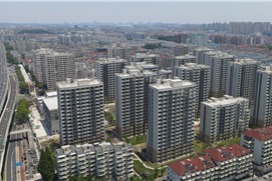MIIT: Stable industrial growth chief goal


China's top industry regulator said stabilizing industrial growth will be its top priority in 2022, and it will also step up the promotion of industrial chain upgrade, digital transformation and low-carbon development.
Xiao Yaqing, minister of industry and information technology, said his ministry will focus on boosting the industrial economy.
Xiao said the top industry regulator will strengthen efforts to boost manufacturing investment and expand consumption of new energy vehicles, smart home appliances and green building materials, as well as promote foreign investment projects next year.
The plans come as the ministry said it had finished major industrial goals for 2021, but it did not offer more details.
In November, industrial output-a key growth indicator-rose 3.8 percent year-on-year, up from 3.5 percent in October, said the National Bureau of Statistics. Experts attributed the acceleration to the recovering supply of raw materials and energy, as well as buoyant external demand.
But challenges still exist. MIIT said that next year it will cultivate more national manufacturing innovation centers to achieve breakthroughs in core technologies. It will also call on enterprises, entrepreneurs and industry associations to make a joint push to solve the problems of weak industrial foundations.
According to the ministry, more efforts will also be made to nurture advanced manufacturing clusters-industrial groupings formed by a large number of companies and institutions in proximity that carry out mutual cooperation and exchanges. It is considered to be an advanced form of industrial division of labor and agglomeration development, and is part of China's push to pursue high-quality development of manufacturing, experts said.
China's 14th Five-Year Plan (2021-25) highlights efforts to cultivate advanced manufacturing clusters and to promote the development of key industries including integrated circuits, aerospace, marine engineering equipment, robots, advanced rail transit equipment, advanced power equipment, engineering machinery and medical equipment.
Cheng Nan, director of the planning institute at the China Center for Information Industry Development, a Beijing-based think tank, said that previously a large number of industrial parks relied on transportation and geographical convenience, abundant resources, policy dividends and other factors to bring about cost advantages, which have attracted enterprises to concentrate on specific areas. But such approaches merely represent scale expansion strategies.
"Advanced manufacturing clusters, however, are based not just on physical proximity among industrial enterprises, but on deeper cooperation among companies to promote the development of local economies," Cheng said.
The ministry added that in 2022 it will ratchet up resources to help small and medium-sized enterprises as part of its broader push to trigger creativity across SMEs and foster a better business environment.
China aims to cultivate 1 million innovative SMEs by 2025, according to a government guideline on the development of SMEs during the 14th Five-Year Plan period.




































